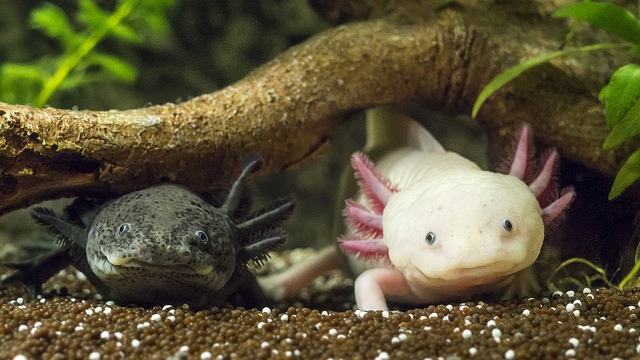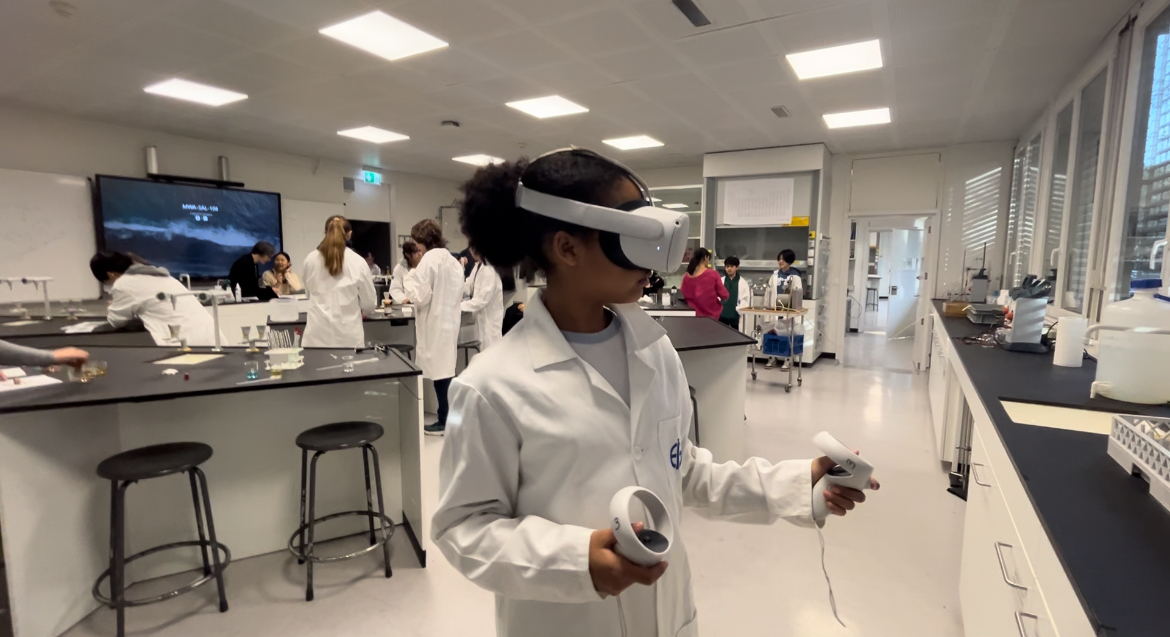If you ever take a trip to Mexico and find yourself walking along the Xochimilco lake complex, you may be lucky enough to glance down and see a small fish-like salamander creature with beady black eyes, a crown, and gills.
You’d be face to face with an axolotl.
They’re quite lonely creatures, really, in that they’re no longer found in the wild outside Xochimilco and they’re unique from others in their family. They’re salamanders – amphibians – but as you can see, they differ from what you’d typically expect. They come in a great range of colours: literally from black to white, with browns and creams in between. And they really are odd.
For one thing, you might notice that they look quite a bit like walking fish. This is as a result of their rare display of neoteny, where juvenile characteristics continue to be seen in adulthood. This means they retains their gills and fins (hence the crown), and do not develop the protruding eyes or eyelids that other salamanders would. They do develop a set of lungs, though they tend remain permanently in water and breathe through these only when oxygen levels are low. In some very rare cases, one might metamorphose into an adult form, and then if you were to see it you’d find a creature who looks how you’d expect a salamander to look (albeit very pale in the case below!)

A rare look at a metamorphosed axolotl.
They also display a remarkable ability to regenerate. Whilst you might expect the typical salamander to be able to regrow its tail and limbs, an axolotl can not only regrow these over and over again without any signs of scarring, but if you were to cut off part of its spinal cord it would be able to regrow this as well. To give you some idea of how this works, when a limb is cut off, the cells at the site of amputation lose their individual characteristics, and so are similar to stem cells. These cells create a structure called a blastema which can then develop into a whole fully-functioning limb. You can imagine how interesting axolotl regeneration is for scientists at the moment, as investigations into the their regenerative abilities could provide insight into future treatments for humans.
Unfortunately, these lovely little creatures are now in critical danger. Though they’re widely bred in captivity and loved across the world, in the wild pollution and invasive species are taking its toll. Hope is not completely lost, though. There’s a lot of local work to help them, such as the use of “floating gardens” to provide sanctuary and the absence of chemical pesticides, but there needs to be a lot more action taken if they are to be saved.
Personally, I found that once I knew more about axolotls, I cared a great deal for their survival. That’s why I started Marine Life Club, on Thursdays at break – to help raise awareness of different water-dwelling creatures.



